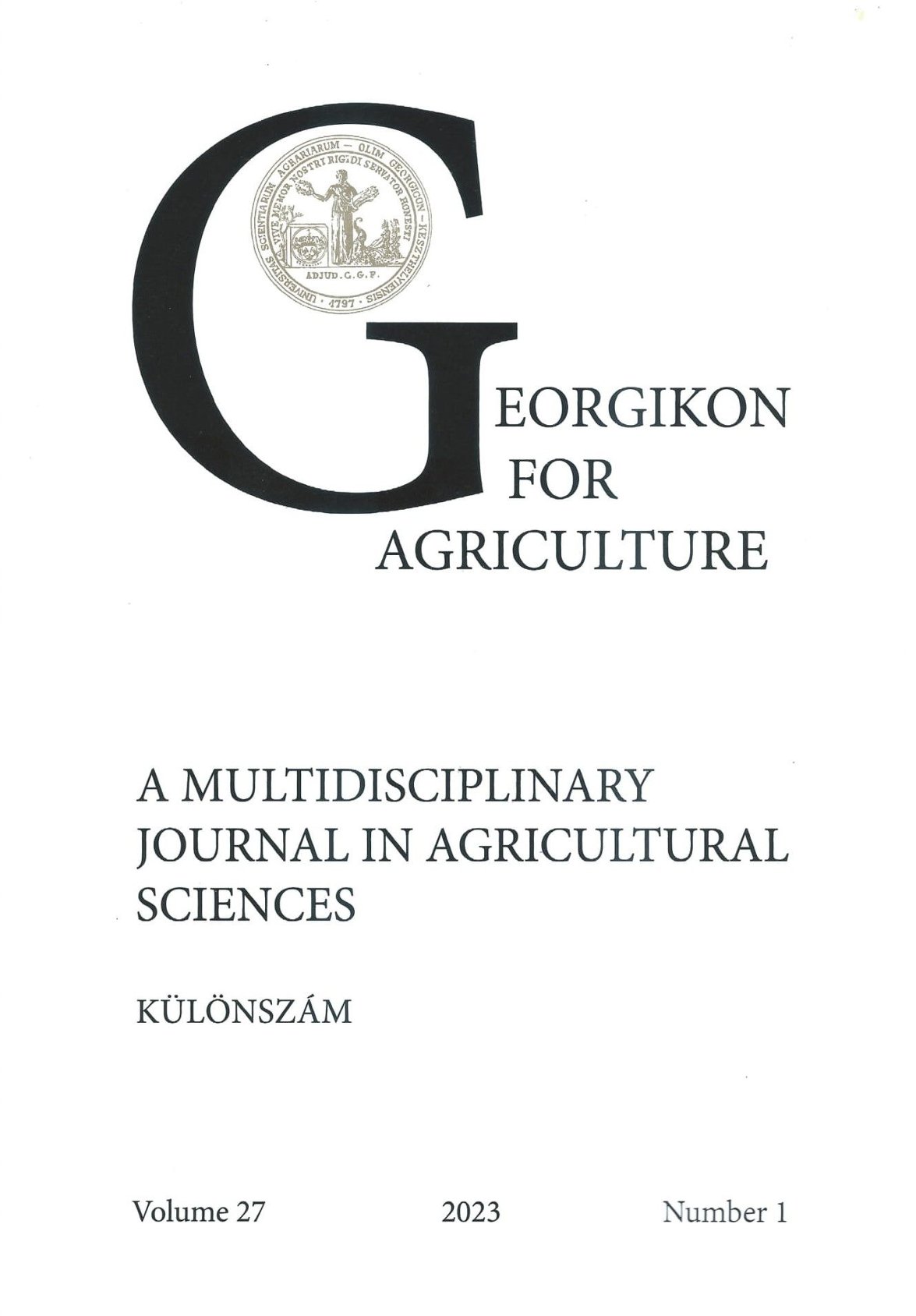A prokloráz penetrációja a növényi szövetekbe posztharveszt alkalmazás során és mérgező hatása házityúk-embriókra
Keywords:
prochloraz, fungicide, ecotoxicity, MRL valueAbstract
We studied the penetration of prochlorase into the deeper tissues of the fruit on lemons. The pesticide was applied in three different concentrations to the fruit with an immersion method for an exposure time of 1, 4 and 8 minutes, and also by spraying. The treatment experiments showed that both the immersion time and the concentration of the test item had a significant effect on the residue levels that could be measured on the fruit peel. The spray application method resulted in lower residue levels than most of the immersion experiments with the same concentration. We also used the pesticide on domestic hen eggs to obtain information on its ecotoxicological properties. From the egg tests is was clear that prochloraz has a detectable embryotoxic effect.
References
Stein, B., Michalski, B., Martin, S., Pfeil, R., Ritz, V. and Solecki, R. 2014. Human health risk assessment from combined exposure in the framework of plant protection products and biocidal products. J Für Verbraucherschutz Leb. 9. https://doi.org/10.1007/s00003-014-0915-7
Domingues, I., Oliveira, R., Musso, C., Cardoso,. M, Soares, A. M. V. M. and Loureiro, S. 2013. Prochloraz effects on biomarkers activity in zebrafish early life stages and adults. Environ. Toxicol. 28. 155-163. https://doi.org/10.1002/tox.20710
Baumann, L., Knörr, S., Keiter, S., Nagel, T., Segner, H. and Braunbeck, T. 2015. Prochloraz causes irreversible masculinization of zebrafish (Danio rerio). Environ. Sci. Pollut. Res. 22. 16417-16422. https://doi.org/10.1007/s11356-014-3486-3
Glavinic, U., Tesovnik, T., Stevanovic, J., Zorc, M., Cizelj, I., Stanimirovic, Z. and Narat, M. 2019. Response of adult honey bees treated in larval stage with prochloraz to infection with Nosema ceranae. PeerJ. 7. e6325. https://doi.org/10.7717/peerj.6325
Alkassab, A. T., Kunz, N., Bischoff, G. and Pistorius, J. 2020. Comparing response of bufftailed bumblebees and red mason bees to application of a thiacloprid-prochloraz mixture under semi-field conditions. Ecotoxicology 29. https://doi.org/10.1007/s10646-020- 02223-2
Bro, E., Devillers, J., Millot, F. and Decors, A. 2016. Residues of plant protection products in grey partridge eggs in French cereal ecosystems. Environ. Sci. Pollut. Res. Int. 23. 9559- 9573. https://doi.org/10.1007/s11356-016-6093-7
Downloads
Published
Issue
Section
License
Copyright (c) 2023 Buzás Anna, Major László, Batta Sára, Lányi Katalin

This work is licensed under a Creative Commons Attribution-NonCommercial-NoDerivatives 4.0 International License.
Cikkre a Creative Commons 4.0 standard licenc alábbi típusa vonatkozik: CC-BY-NC-ND-4.0. Ennek értelmében a mű szabadon másolható, terjeszthető, bemutatható és előadható, azonban nem használható fel kereskedelmi célokra (NC), továbbá nem módosítható és nem készíthető belőle átdolgozás, származékos mű (ND). A licenc alapján a szerző vagy a jogosult által meghatározott módon fel kell tüntetni a szerző nevét és a szerzői mű címét (BY).




